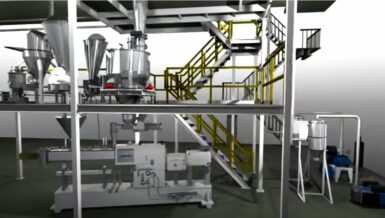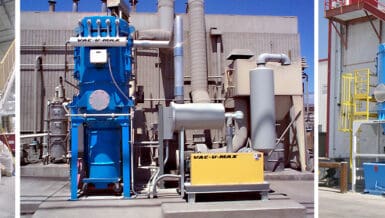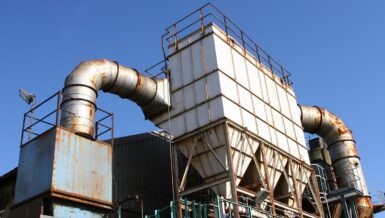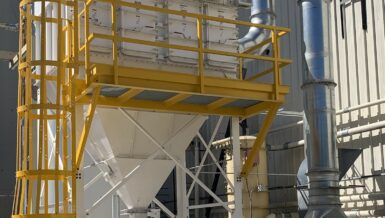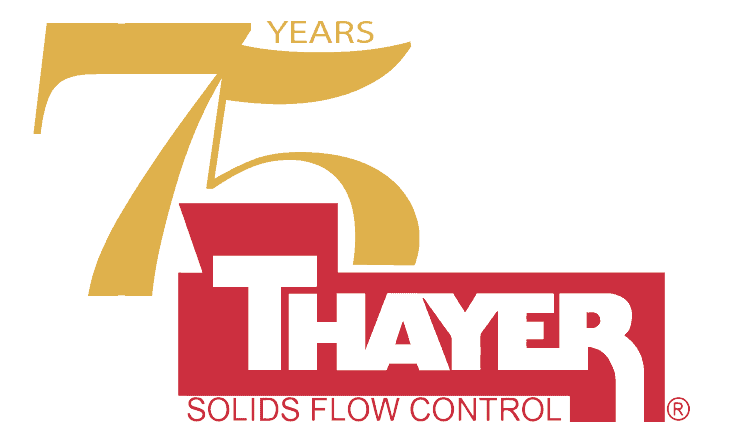I was a business owner who had to deal with the “real world” of dust collectors used in project work. The nightmares I experience regularly, and that others can attest to as “it is what it is”, needed to be solved. Finding a solution was my goal and is now my full-time business. Yes, I am passionate about being smart when it comes to project work, but I am even more dedicated to the people who do the work. The BlueSky machine I invented was a direct result of real-world experiences and disasters. I was NOT willing to just turn a blind eye to the perils that lie disguised in dust collection machines as they “clean the air our workers and communities breath”.
The issue does not lie in their function as air cleaners – the problem lies in servicing the machines and removing the waste they collect. As an analogy – there was nothing wrong with the torque generated by older diesel engines, but the black exhaust smoke they emitted WAS an issue.
Here is the naked truth about “safe mobile dust collectors” (such as those depicted in the image above) and the point-by-point intrinsic risks and problems I have personally encountered on multiple major projects, that are now solved.
- Hydraulic auger
Most mobile dust collectors feature an auger in the belly of the collector to move collected dust to a disposal chute, for decanting into a drum or bag. Such augers are typically hydraulically operated and are effective when operational. However, should such an auger become jammed (or even shear off), as they frequently do, the auger needs to repaired by hand. Under such circumstances, the dust collector is normally filled with dust (auger is inoperative) and a person needs to crawl into the dust-filled confined space, with dust raining down from the dirty filters above. Yes, access covers are easily removed, but the rest of the maintenance operation is very dangerous and an unpleasant task, to say the least. Yet the deployment of this class of equipment continues despite the regular requirement of auger services during project work.
2. Filter removal
Removal of clogged filters is mostly done by opening doors located on the top surface. The average working height is 13 feet. The filters, which can weigh up to 50 lbs, are then lifted out through the clean air plenum. From this height, they need to be bagged and disposed of safely. First, on a job site like a roadside, there is seldom a safe man lift with tie-off points. Second, no weather protection against wind blowing the dust around. Third, the dust cake falling off the filters invariably ends up in the clean air plenum. (Using compressed air to blow it clean again is illegal – so how is the clean air plenum cleaned out after being contaminated by dirty filters?) Finally, the person performing the filter changeout, on-site or at the rental company site, will be covered in dust. ( Are there proper cleanup facilities?)
3. Waste handling
The dust collected is typically decanted into drums or bags. The location of the dust collector often makes safe removal and replacement of these containers difficult, and results in spills. Also, the released spouts are highly contaminated with dust cake, that falls and blows freely once exposed. Typically, the area below and adjacent to the auger spout is highly contaminated following a job.
4. Noise
The fans and Diesel engines of most mobile dust collectors are extremely loud and don’t pass local noise ordinances.
5. High duct inlets
The duct inlets are typically high on many of the mobile dust collectors, making safe connections very difficult.
6. Hazardous materials
Mobile dust collectors are designed for sandblasting applications. Any lead, chromate (hexavalent chrome), or asbestos-containing dust types can, therefore, not be safely captured, since the dust cannot be safely removed from the dust collectors. Washing out such dust collectors is impractical and extreme corrosion results unless they are manufactured from stainless steel. Despite this, standard mobile dust collectors are constantly deployed, when leading abatement or paint removal with chromate undercoats present, without the risk being assessed or mitigated.
Frankly speaking, laws and regulations are being broken in most field uses of dust collectors.
Practical issues of field operation.
- Diesel engine and batteries, refueling
Diesel engines directly coupled to the large dust collector fan seem like a smart package. However, these engines are typically not optimized for noise, or emissions, and are often in poor conditions. The engines typically are hard to service, can run hot, and have covers missing. Further, since the batteries are used for auxiliary power for the dust collector pulsing jet cleaning systems, they are normally run flat when the systems are not turned off following pulsing off-line. Finally, because the dust collector is often parked close to the actual working area, the refueling of the equipment can pose access issues, leakage, and even potential diesel contamination.
2. Hydraulic leaks
The augers are operated by auxiliary powered hydraulic systems, which typically leak and, together with the dust, pose a severe contamination risk.
3. Tires and weight
The dust collectors with engines are very heavy and suffer continual tire damage on rugged work sites. It is not usual to have a flat tire in a bad location. Further, the weight of the collectors usually requires a specialized hauling horse.
4. Waste handling
The lifting and disposal of dust removed from a dust collector can pose a serious field hazard. Most major spills, which occur frequently, are never reported, the proverbial “sweeping it under the rug”. While authorities carefully monitor the presence of the collector, they do very little to examine a site where a dust collector has been. If such inspections took place, diesel leaks, hydraulic oil leaks, and extensive dust contamination (that blows in the wind and contaminates the natural run-off) would be observed on most sites.
5. Cleaning
Following the usage of a dust collector, the cleaning of the machine and the removal of filters “is done behind closed doors”. No more needs to be said here, but rest assured, those tasked with this cleanup are not paid enough.
The BlueSky solution
To overcome all the above problems, the BlueSky system uses an electric fan coupled, when required, to a generator. The generators available are usually quiet and ecological. The generator may be placed at a convenient location for refueling or service, as well as being a source of electrical power to the job site. If you have ever had the bad luck, as I have, of trying to troubleshoot a diesel engine that will not start on a dust collector, the hum of a generator with a quick replacement option feels like a dream come true.
The BlueSky mobile dust collectors are incorporated in roll-off container kits, which allow large quantities of dust collection (10 yards before needing to be dumped), or fitted with SmartBoxes modules should the waste be hazardous. No augers, not waste. The filters are housed in seal modules, and during change, no person ever touches the filters. Filters can be exchanged in minutes without exposing workers, or the environment, to dust.
Importantly, BlueSky systems can be placed at any location using a standard container roll-off truck. Relocation, pickup, or replacement can be fully handled by a rental or waste management company.
Conclusion
Dust collection on job sites is becoming more and more critical. With a BlueSky system, the dust collector does not become a waste management nightmare, and legislators can rest easy that the process of dust collection, dust handling, and equipment usage is intrinsically safe. We live in times where being smart is considered preferable over being resilient to tough times.





